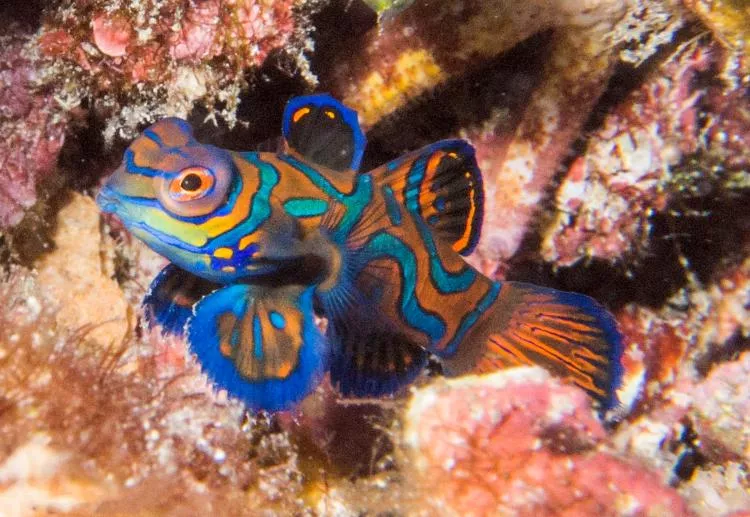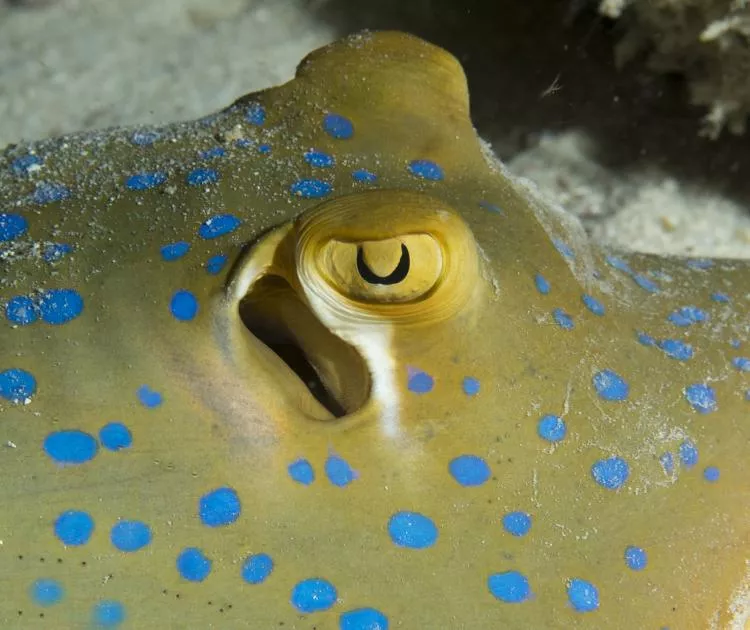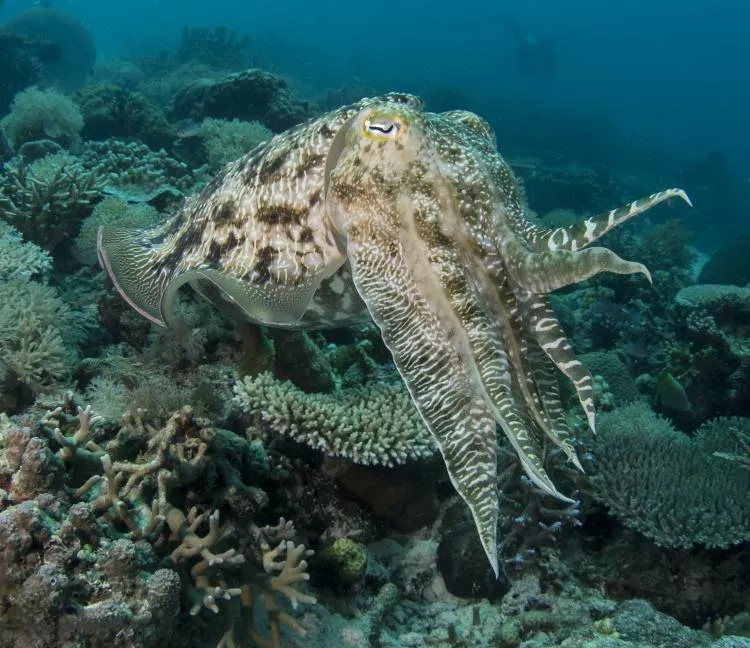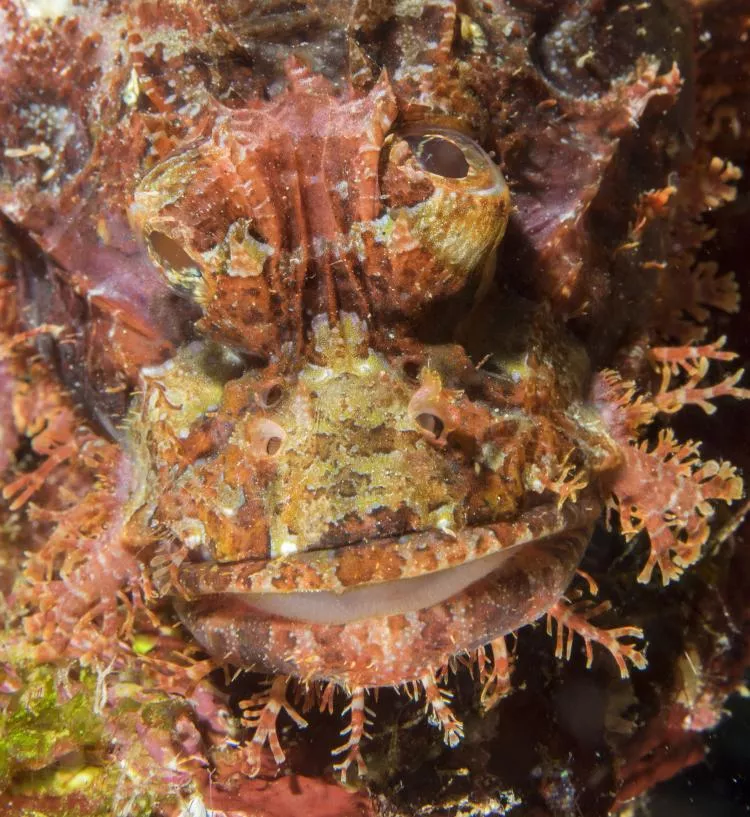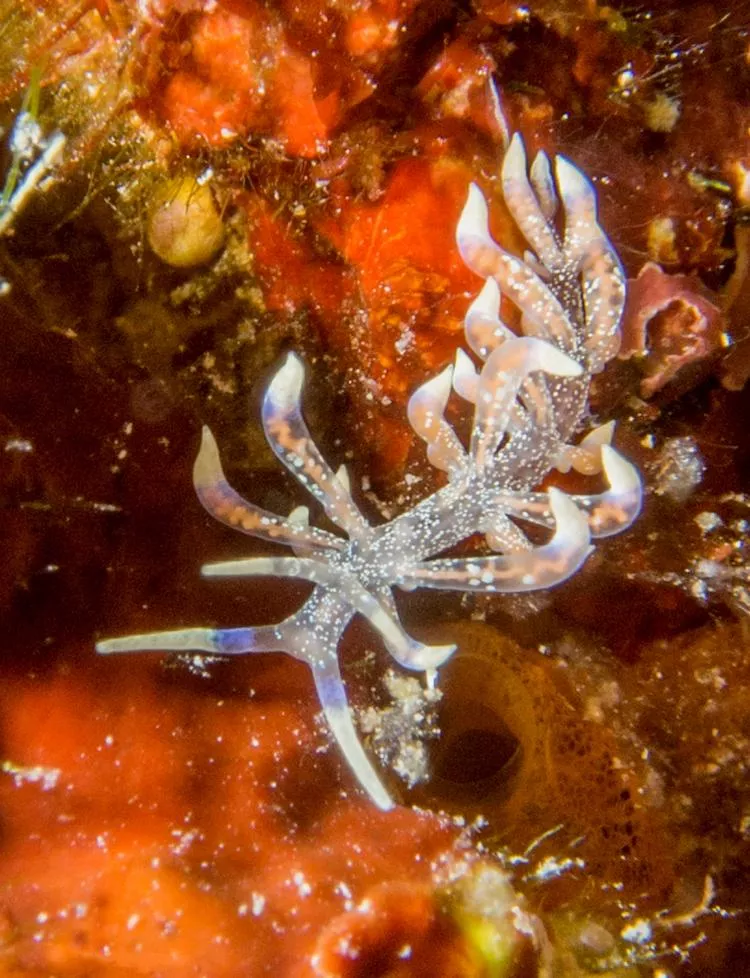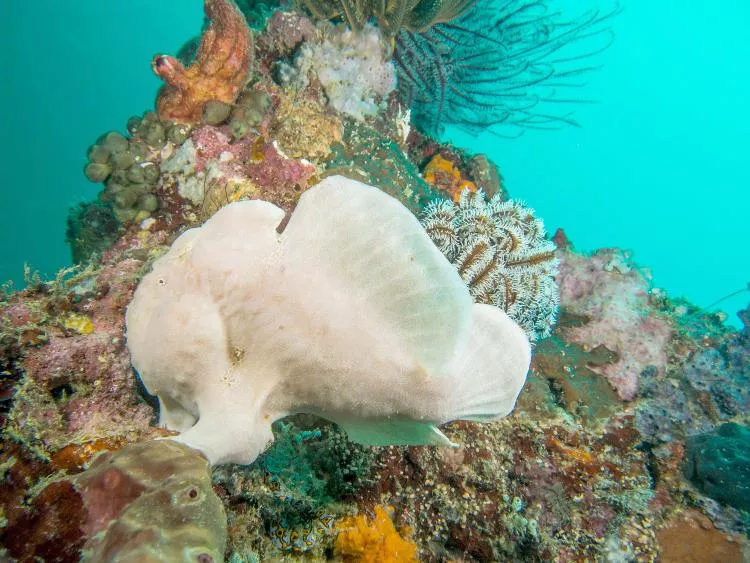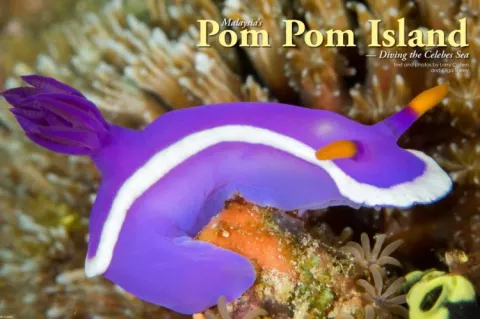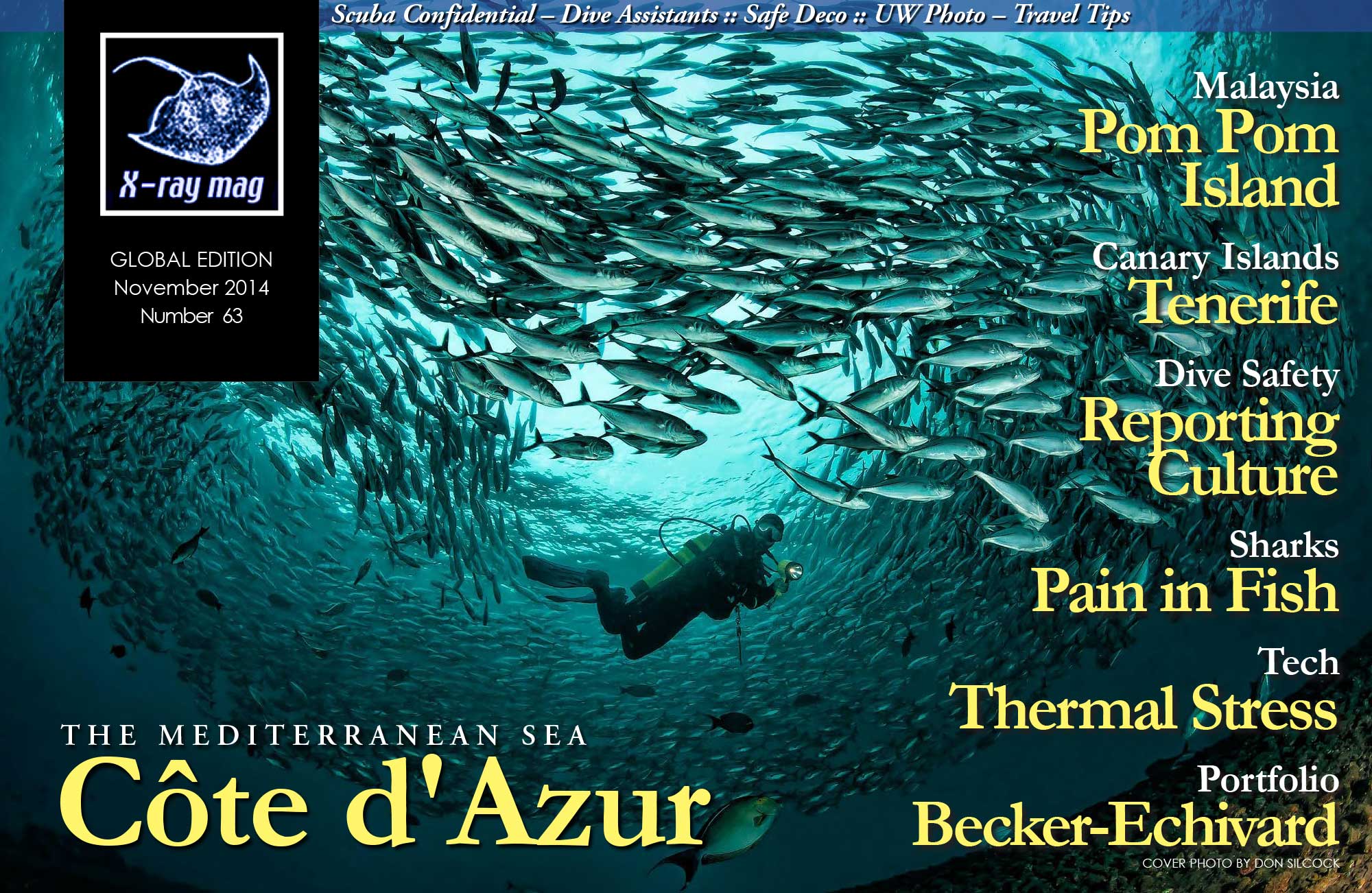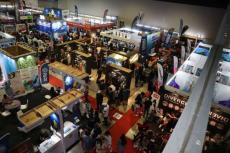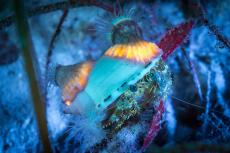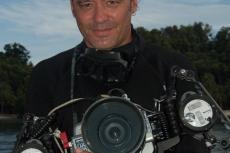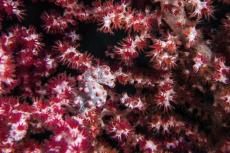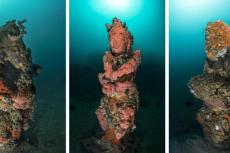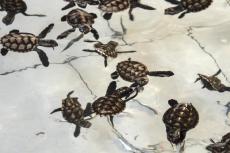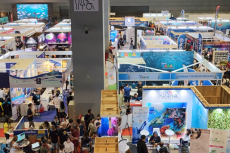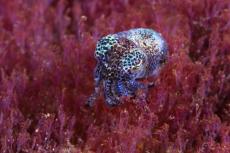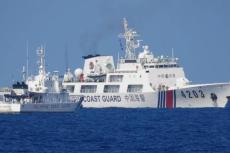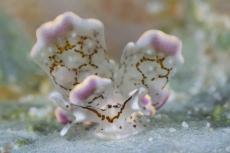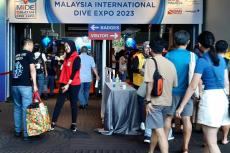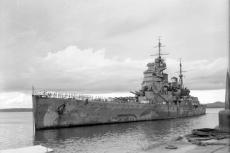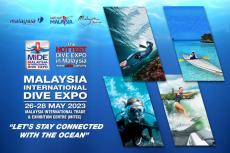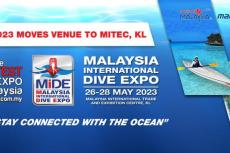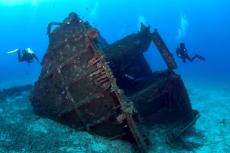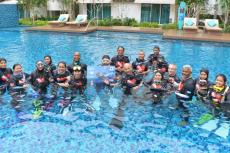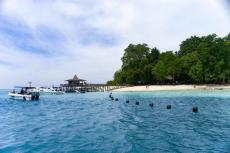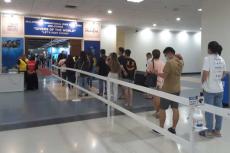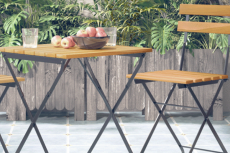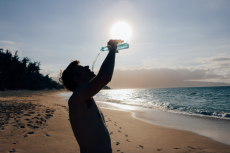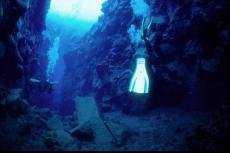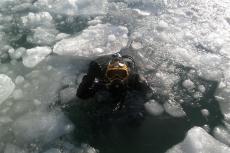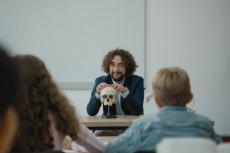Borneo is the third largest island in the world. It is the home to three countries—Indonesia to the south, Brunei and Malaysia in the north. The Malaysian states of Sabah and Sarawak are located on the island. Our journey to Pom Pom Island took us to the Tawau airport in the state of Sabah. This was a two hour and 40 minute flight. We then had to take a van another hour to the port city of Semporna. This is the starting point for all dive resorts in Malaysia.
Contributed by
Prior to the journey, my partner, Olga Torrey, and I were invited to do presentations at the Asia Dive Conference (ADCON) in Kuala Lumpur Malaysia and dive at Pom Pom Island with the Celebes Beach Resort. This would be the perfect trip to see how my new camera system would perform.
It was the ninth year Ness Velu and her staff have been running the Malaysia International Dive Expo (MIDE). The expo has many exhibitors including dive operators, gear manufactures, shops and training organizations. During the conference there were many speakers including Michael Aw from Ocean Geographic Magazine. Non-divers could try scuba in the pool with a PADI instructor. This is the first year Ness added the Asia Dive Conference (ADCON) were experts gave presentations on photography and technical diving. Olga and I were honored to be among the presenters that also included photographer with Scubazoo Christian Loader, editor-in-chief of Action Asia Magazine Steve White, technical dive instructor with Blue Label Diving Ben Reymenants, ITDA Regional Director William Ong and underwater photographer Ab Lee.
Kuala Lumpur is a major cosmopolitan city that is worth exploring with many photo opportunities. From Chinatown, the Petronas Twin Towers to the King’s Palace, the architecture is varied and interesting. Working close, the 8mm fisheye could be used to create an interesting prospective with distortion. The Panasonic 7-14mm allowed a wide view without the distinctive curve of a fisheye lens. The King’s Palace is behind a gate, but from the hill, one could get a clear view. The Palace was in the distance, but by using the 40-150mm lens, it was possible to get an image without cropping.
Just like most major cities, the residents are the true soul of the city and need to be documented. Most people are extremely friendly and are more than happy to be photographed. Sometimes the problem was to get a natural candid look. When faced with a camera many people would look directly in the camera, smile and make gestures.
The 12-40mm f/2.8 PRO and Olympus 12-50mm f/3.5-6.3 ED M.Zuiko EZ were usually the lenses of choice for these images. The lenses are wide enough for environmental portraits and street photography. The 40-150mm was useful when photographing scenes in the distance such as the dance performance at the National Museum. Leaving this interesting urban center we went to the outskirts of Borneo to go diving. Our van pulled up to a long dock with small huts all along its length. Each hut was the office for a different resort. The Celebes Beach Resort’s office was a nice space to relax out of the heat and have some water while the final paper work was taken care of.
To the right and left of this dock were many shacks on stilts. The residents of these structures are the Bajau people also known as Sea Gypsies. Once nomads who spent their entire lives on boats traveling from Island to island, they have now settled in the area. According to the January 2007 Monthly Statistical Bulletin, Department of Statistics Malaysia, they are the second-largest ethnic group in the Malaysian state of Sabah, making up 13.4 percent of the total population.
Using the 40-150mm lens, we were able to zoom into these people’s lives. June is the rainy season in Malaysia. We were very lucky and got little rain. The hour we spent on this dock, there was a downpour. The OM-D E-M1 and OM-D E-M5 are weather sealed. But not all Olympus and Panasonic lenses are. So it is important to keep your rig dry when using a non-weather sealed lens. Luckily the dock with all the dive resorts offices was covered. So was the small boat we boarded for the 45-minute ride to Pom Pom Island in the Celebes Sea.
Pom Pom Island
Pom Pom Island is small, with two resorts on the Island. Celebes Beach Resort is three and half years old at this writing. The cliental were mostly from Mainland China, Europe and Malaysia. Being from the United States, we were in the minority. The 16 rooms were in eight different buildings. The rooms were modest but clean and comfortable. The air-conditioning was strong and there was plenty of room to store extra gear.
The main pavilion housed the dinning area and dive center office. The gear area had plenty of bins for gear storage and places to hang wetsuits and BCs. There were also wash bins dedicated to certain gear. One was for cameras, another for regulators and another for wetsuits. At the time of our visit, air was the only gas available. Getting heavy gear onto the island was not easy. The staff at Celebes Beach Resort had been waiting patiently for their new nitrox system to be delivered. The nitrox system was installed just after our visit.
We had already met our dive guides for the week—Sherwin Shim, Jackson John and resort manager, Nurul Yazid—at ADCON and on the plane to Tawau. The waters around Pom Pom Island are known for macro life. Nurul, Jackson and Sherwin are skilled at spotting the tiniest of creatures. Exhausted from our travels we still decided to do a 6PM dive on our first day at the resort. The site directly in front of the resort is known as the Cleaning Station. I set up my housing with the 60mm macro and Olga had the Olympus 12-50mm lens with macro button on her Olympus OM-D E-M5.
Sherwin and Jackson started searching a gorgonian for pygmy seahorses. While they searched we took portraits of a nearby lionfish. Our guides banged on their tanks to get our attention. Using their pointers they pointed in excitement. I saw nothing. Not wanting to insult our guides, I blindly pointed my camera in the direction of their pointers. Figuring there was something really small, I manually set the camera to the closest focusing distance.
This would give me a life-size image on my camera sensor. This is known as shooting a 1:1 magnification ratio. I then moved in. When what looked to me like just a coral stem was sharp, I pressed the shutter release, expecting to have nothing of interest in the frame. Later, when looking at the images on the computer, everyone said you got the pygmy seahorse; I still did not see it. A life size 1:1 image of a creature that is smaller than your thumbnail was still too small. After doing some cropping, I finally saw that I got my first image of this tiny creature. Not a very good image but to my surprise it was in the frame.
For this subject I should have used the Aquatica +10 Wet Diopter Close Up Lens. This lens has a 67mm filter thread and would have been mounted directly to my lens port. Then I would have been able to produce an image with a 50 percent increase in magnification. Of course, actually getting it in the frame is another matter. Moving on, I was able to photograph many small creatures that I could see. Tiny clownfish would dart in and out of an anemone for protection. Anemones are poisonous to most marine life, but they have a symbiotic relationship with the clown fish.
Whenever you have on a macro lens, you see interesting large subjects. A large sea turtle and a blue spotted stingray allowed us to get extremely close. With the 60mm macro, all I could do was a turtle headshot and a close-up of the ray’s eye. Not bad for the first dive of the trip!
(...)
Published in
-
X-Ray Mag #63
- Läs mer om X-Ray Mag #63
- Log in to post comments

